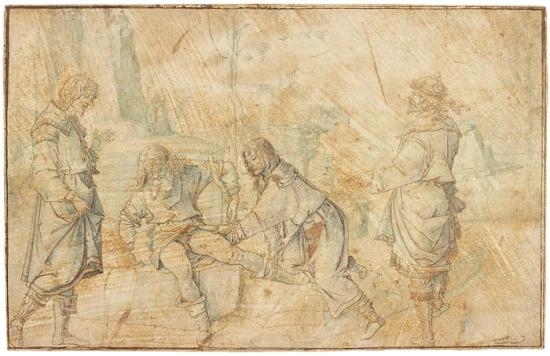
Drunkenness of Noah
Inscribed at lower right, in pen and brown ink, albordür[er] [i.e., Alberto Dürer].
Purchased by Pierpont Morgan, 1909
Patronage
The astonishing creative efflorescence of sixteenth-century Venice would not have been possible without a rich network of civic, religious, and governmental support. The republic was governed by a hereditary ruling class under the leadership of a doge—generally a member of the inner circle of powerful local families whom the aristocracy appointed for life. Venice celebrated itself and proclaimed its civic ideals in large paintings by Titian, Veronese, and Federico Zuccaro that lined the walls of the Doge's Palace. Wealthy lay confraternities, called scuole, provided another essential layer of support and promoted a distinctively Venetian style of large narrative composition. Finally, a powerful and enlightened aristocracy commissioned works for their private dwellings in town and on the mainland. Whereas Giovanni Bellini and his followers had primarily produced altarpieces and religious images for personal devotion, this new generation of Venetian artists also met the demands of their expanding clientele for secular subject matter.
The painter and architect Bartolomeo Montagna, who is first documented in Venice in 1469, was a member of Giovanni Bellini's workshop. In the present sheet, one of Noah's sons is shown piously attempting to cover his drunken father's nudity, while another draws attention to this embarrassing state. The drawing has been associated with a commission of 1482 for the Scuola Grande di San Marco, Venice, for paintings of the flood and "other related events" from the Book of Genesis. The paintings were destroyed in a fire in 1485.
